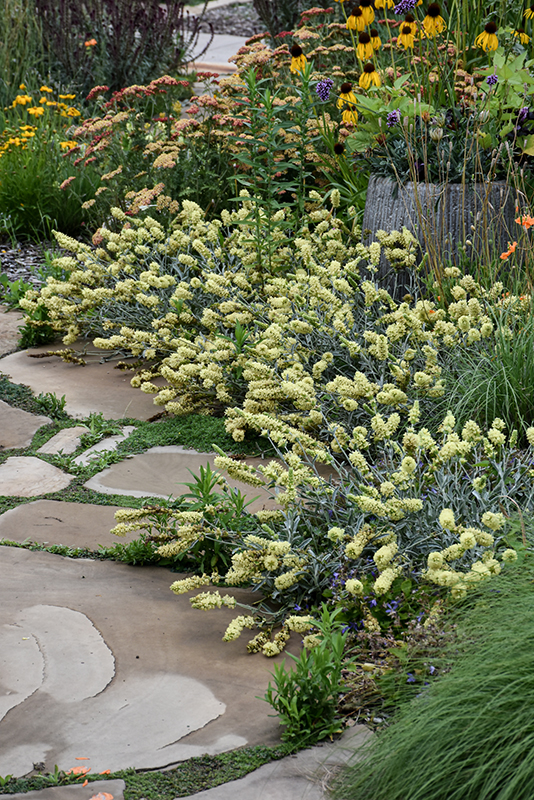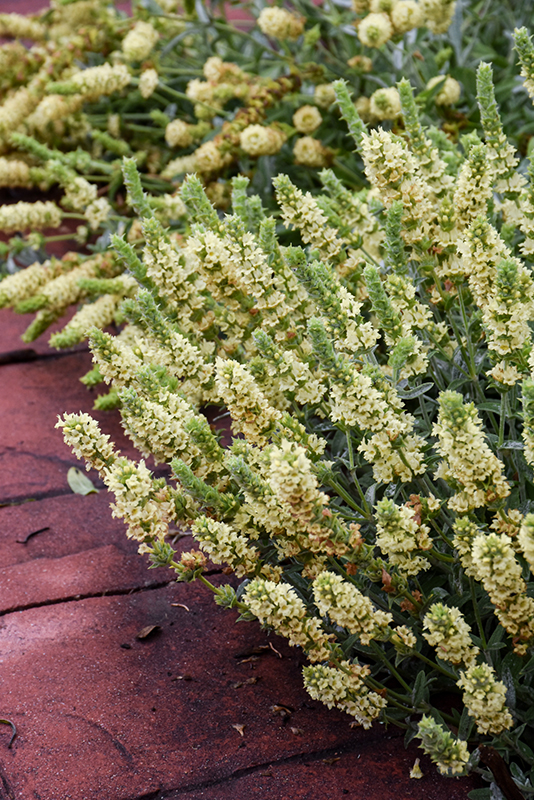Plant Height: 12 inches
Flower Height: 18 inches
Spacing: 12 inches
Sunlight:
![]()
Hardiness Zone: 6
Other Names: Mountain Tea, Shepherd's Tea
Description:
This remarkable shrub presents attractive felted-white leaves and interesting yellow flowers in summer; flowers and leaves are used to make delicious herbal tea that is said to have health benefits; great for nutrient poor, dry areas, alpine gardens
Edible Qualities
Ironwort is a perennial herb that is typically grown for its edible qualities, although it does have ornamental merits as well. The tomentose narrow grayish green leaves with hints of silver which emerge chartreuse in spring can be harvested at any time in the season. The leaves have a delicious taste and a distinctive fragrance.
The leaves are most often used in the following ways:
- Tea
Features & Attributes
Ironwort features showy spikes of buttery yellow flowers at the ends of the stems from early to late summer. The flowers are excellent for cutting. Its attractive tomentose narrow leaves emerge chartreuse in spring, turning grayish green in color with hints of silver the rest of the year.
This is an herbaceous evergreen perennial herb with an upright spreading habit of growth. Its medium texture blends into the garden, but can always be balanced by a couple of finer or coarser plants for an effective composition. This plant will require occasional maintenance and upkeep, and should only be pruned after flowering to avoid removing any of the current season's flowers. It is a good choice for attracting bees and butterflies to your yard. Gardeners should be aware of the following characteristic(s) that may warrant special consideration;
- Self-Seeding
Aside from its primary use as an edible, Ironwort is sutiable for the following landscape applications;
- Mass Planting
- Rock/Alpine Gardens
- General Garden Use
- Naturalizing And Woodland Gardens
- Herb Gardens
- Container Planting
Planting & Growing
Ironwort will grow to be about 12 inches tall at maturity extending to 18 inches tall with the flowers, with a spread of 12 inches. When grown in masses or used as a bedding plant, individual plants should be spaced approximately 12 inches apart. Its foliage tends to remain dense right to the ground, not requiring facer plants in front. It grows at a medium rate, and under ideal conditions can be expected to live for approximately 5 years. As an evegreen perennial, this plant will typically keep its form and foliage year-round.
This plant can be integrated into a landscape or flower garden by creative gardeners, but is usually grown in a designated herb garden. It should only be grown in full sunlight. It prefers dry to average moisture levels with very well-drained soil, and will often die in standing water. It is considered to be drought-tolerant, and thus makes an ideal choice for a low-water garden or xeriscape application. This plant does not require much in the way of fertilizing once established. It is not particular as to soil type or pH. It is somewhat tolerant of urban pollution. This species is not originally from North America..
Ironwort is a good choice for the edible garden, but it is also well-suited for use in outdoor pots and containers. It is often used as a 'filler' in the 'spiller-thriller-filler' container combination, providing a mass of flowers and foliage against which the larger thriller plants stand out. Note that when growing plants in outdoor containers and baskets, they may require more frequent waterings than they would in the yard or garden. Be aware that in our climate, this plant may be too tender to survive the winter if left outdoors in a container. Contact our experts for more information on how to protect it over the winter months.


